Ancient cities of Libya
Private tour of the ancient cities of Libya
Day 1 Tripoli
Highlights: Algeria Square andMartyrs Square.
Meet yourguide and transfer to hotel. Short walking tour in modern Tripoli with its Italian influences.
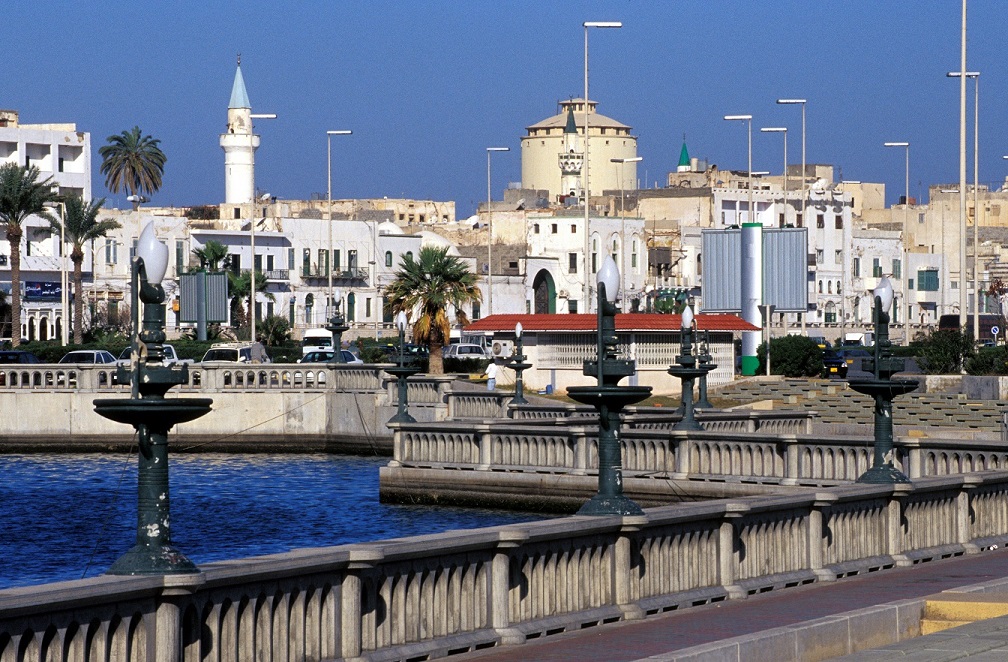
Day 2 Tripoli
Highlights: National Museum, Tripoliold cityand the Arch of Marcus Aurelius.
Full day sightseeing in Libya’s capital city. Visit the wonderful National Museum, housed in the Red Castle (Al-Saraya al-Hamra), which includes one of the finest collections of statuary and mosaics in the world. The walled old town of Tripoli encloses, arguably, the most charming medina in all of North Africa. We”ll explore the warren of streets and alleyways, including the bustling souks, each devoted to a different trade, the historic house of the 18th century governor Karamanli, the 19th century Gorgi Mosque, the former Turkish Prison, now an infant school, St. Georges’ Orthodox Church, the 19th century Ottoman clock tower and the sole surviving building of Roman Oea, the 2nd century Arch of Marcus Aurelius.
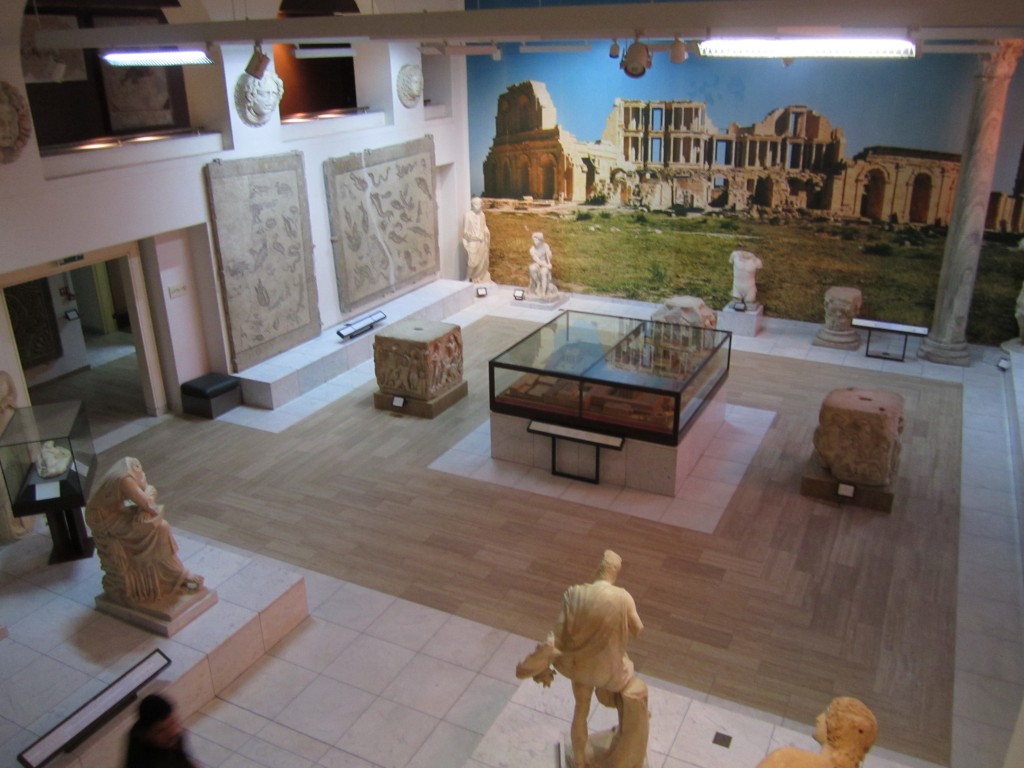
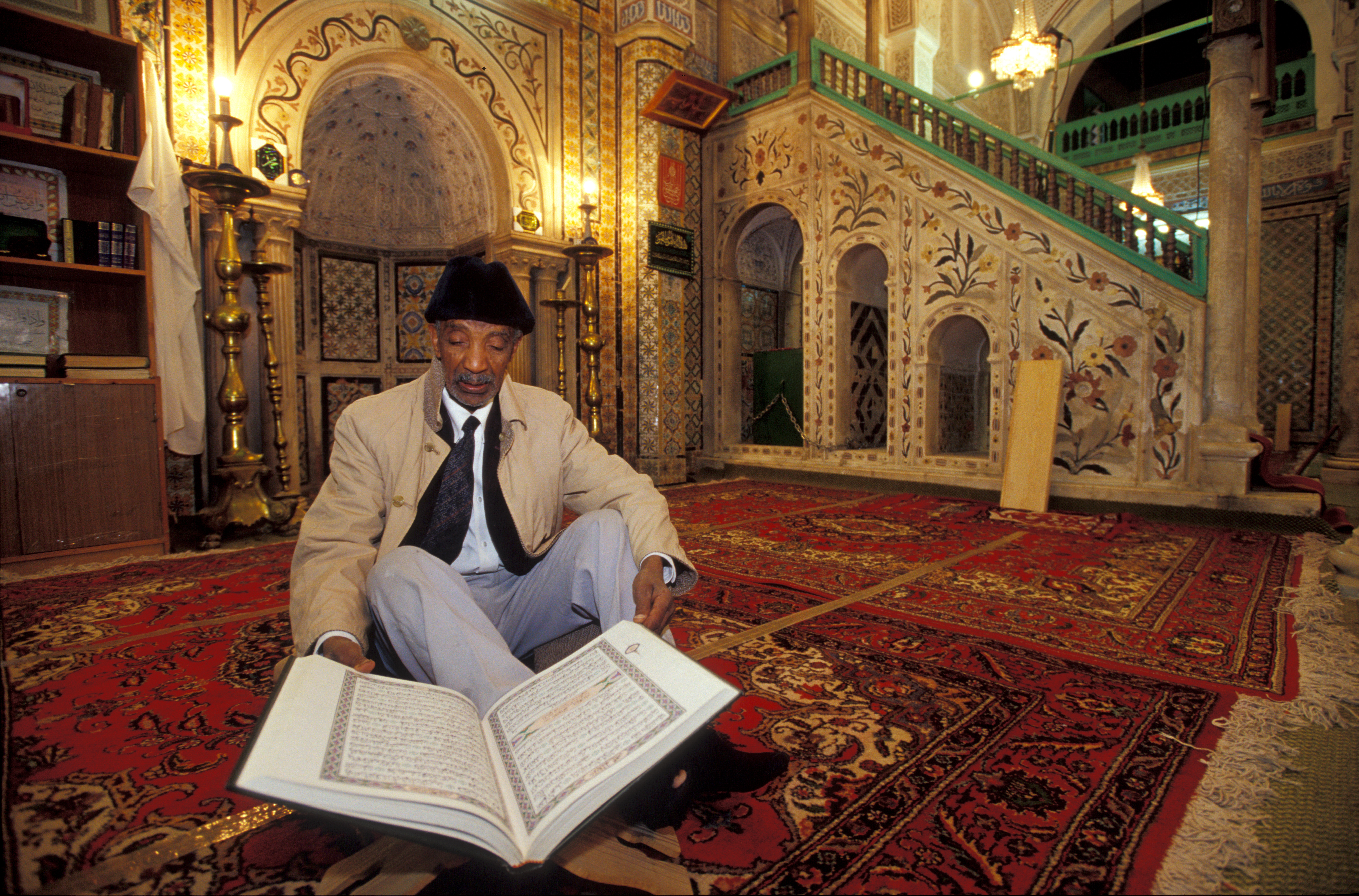
Day 3 Sabratha -Janzour -Tripoli
Highlights: Sabrata Roman Theatre andRoman Museum and the Janzour Tombs.
Visit the UNESCO World Heritage Site of Sabrata, originally founded in the 4th century BC. It later fell under Greek influence before Rome took hold in the 1st century AD. The most spectacular monument is the Theatre, featuring 108 Corinthian columns rising to a height of twenty metres above the stage. Below the stage you will see marble friezes depicting mythological figures including the Three Graces, the Judgement of Paris and the Nine Muses. Other sites include the Punic Mausoleum of Bes, the Temple of Antoninus, the Temple of Zeus, the Court of Justice and the great Roman Forum. The Roman Museum houses exquisite mosaics including complete wall and floor panels. Enroute back to Tripoli, visit the tombs of the Janzour Museum with their impressive paintings.
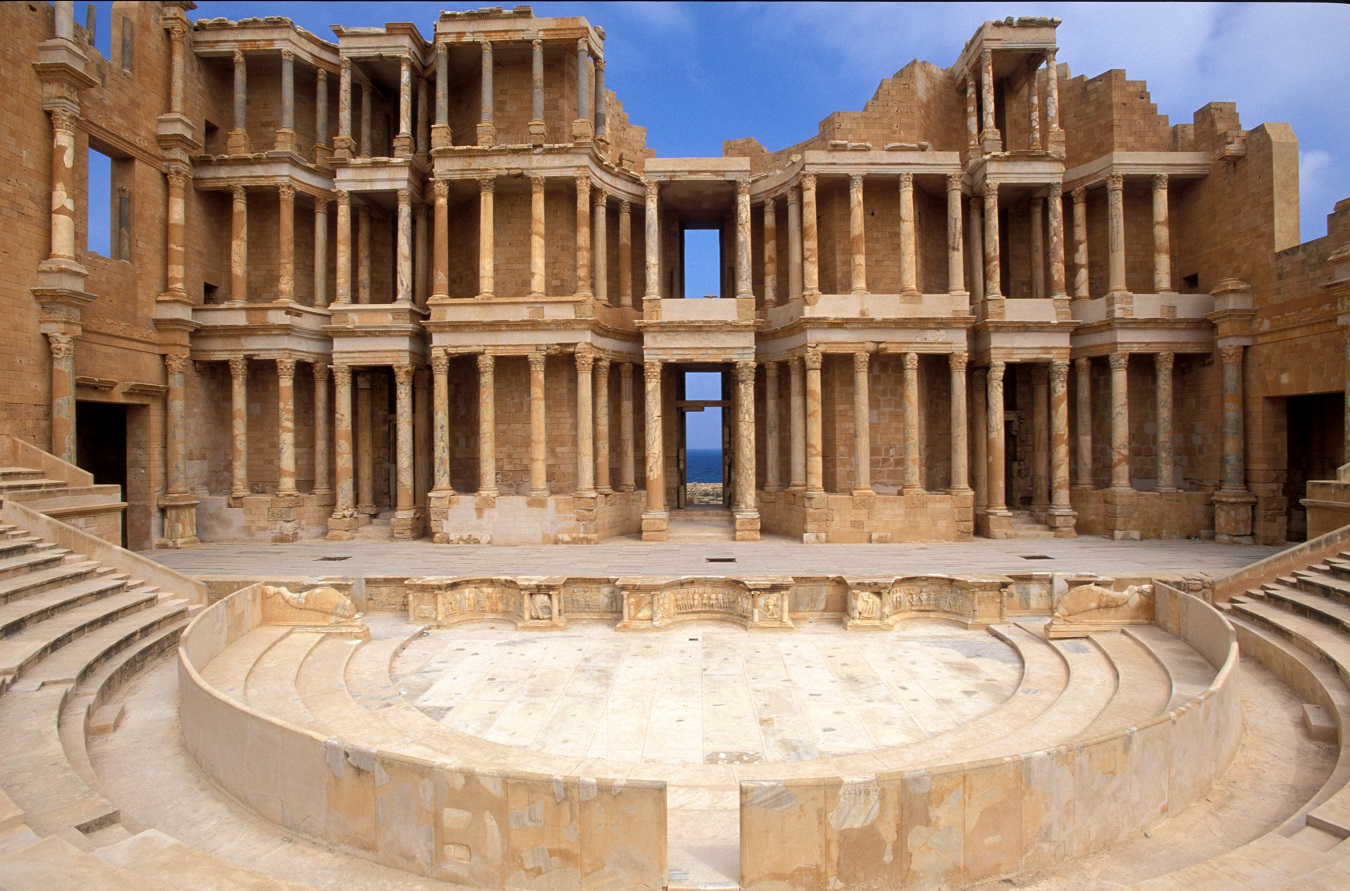
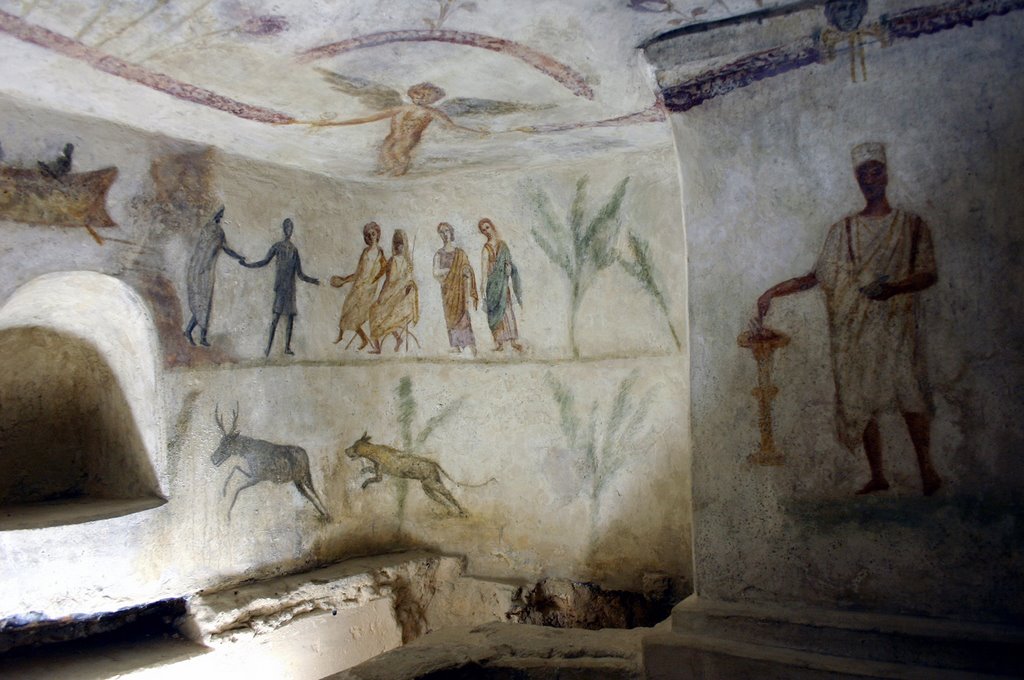
Day 4 Tripoli -Benghazi -Tocra – Ptolemais
Highlights: Colonnaded Palace and theUnderground Cisterns of Ptolemais.
A morning flight takes you from Tripoli to Libya’s second city, Benghazi from where you continue by road to Tokra one of the first ports settled from Cyrene. Inside the walls you find Greek and Roman Columns and the excavated remains of Roman tombs cut into the rock wall of a sunken pit. The fort’s current structure dates from the turkish and italian eras. Outside the gates to the west a small archeological railway runs west to the eastern basilica, within which what remains of the main sanctuary, apse and baptistry are visible along with some ancient greek inscription. A small museum contains a site map of Tokra with some very interesting tomb artifacts.
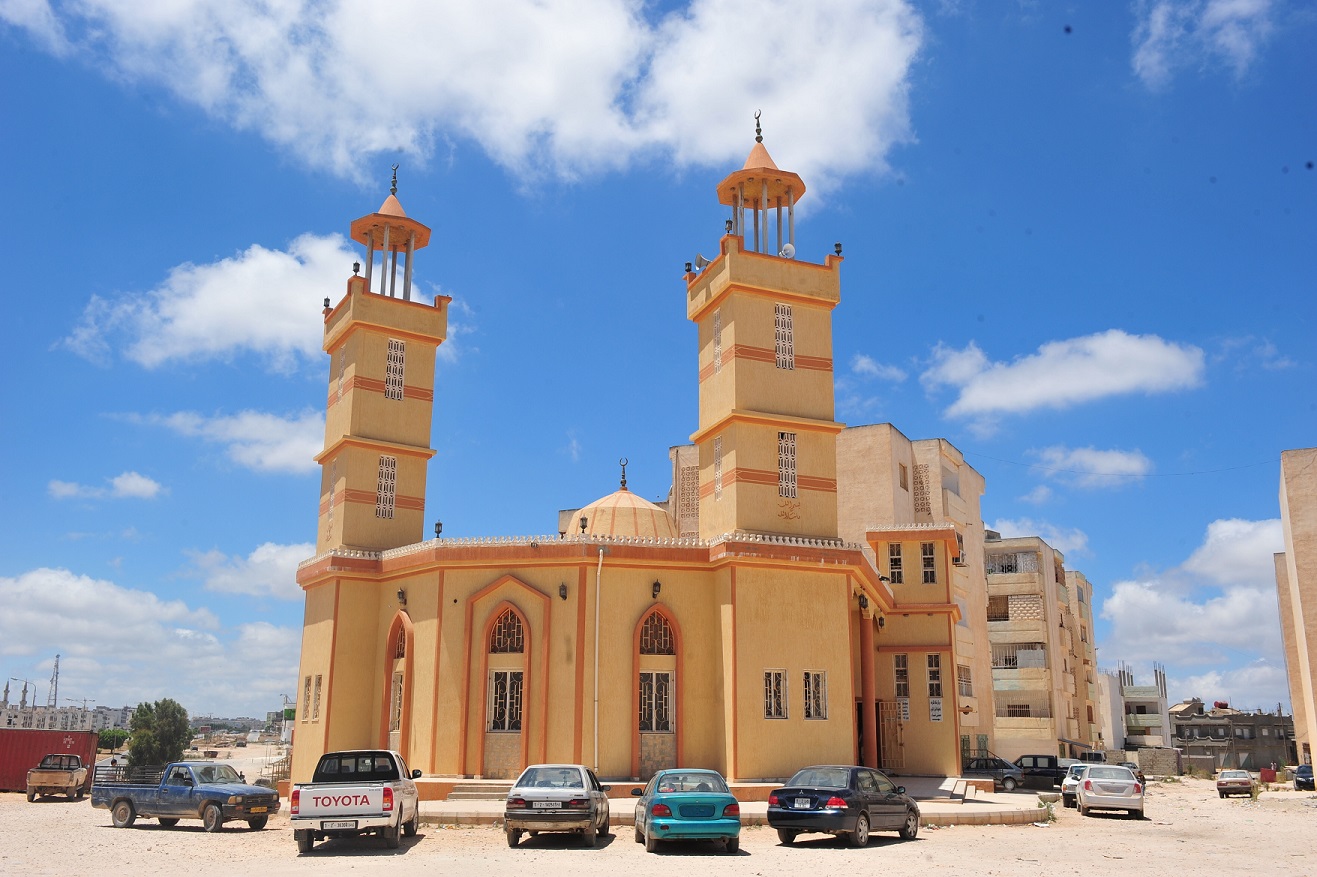
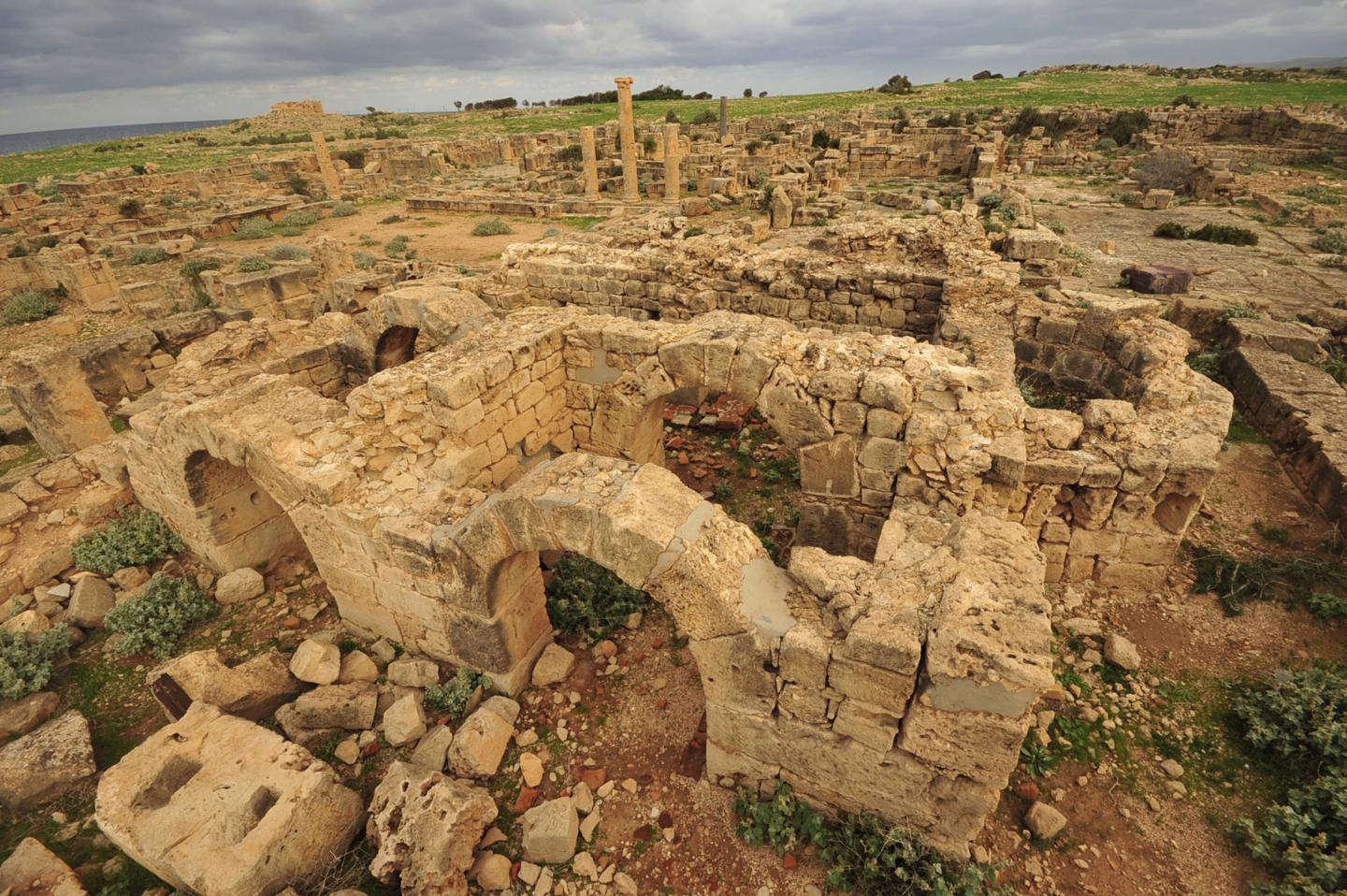
Day 5 Cyrene
Highlights: Temple of Zeus, Forum, Agora, Sanctuary of Apollo and the Amphitheatre.
Full day excursion to the magnificent Greek city of Cyrene, founded in the 6th century BC by immigrants from the Greek island of Thera. The city reached its zenith in the 4th century BC, was ruled by the Ptolemies from the 3rd century BC and fell under Roman rule in the 1st century CD. Two major earthquakes in the 3rd and 4th centuries AD sealed its fate. Amongst the sites visited in Cyrene are the colossal Temple of Zeus, larger than the Parthenon in Athens, the hillside Necropolis containing over 2000 tombs, the Forum, the monumental passageway of Hermes and Hercules, House of the High Priest Jason Magnus,the House of the Christian Hesychius, the Agora (with its Tomb of Battus, Sanctuary of Demeter and Kore and Naval Monument), the Sanctuary of Apollo containing the Temple of Apollo and the Roman Baths, and the Amphitheatre.
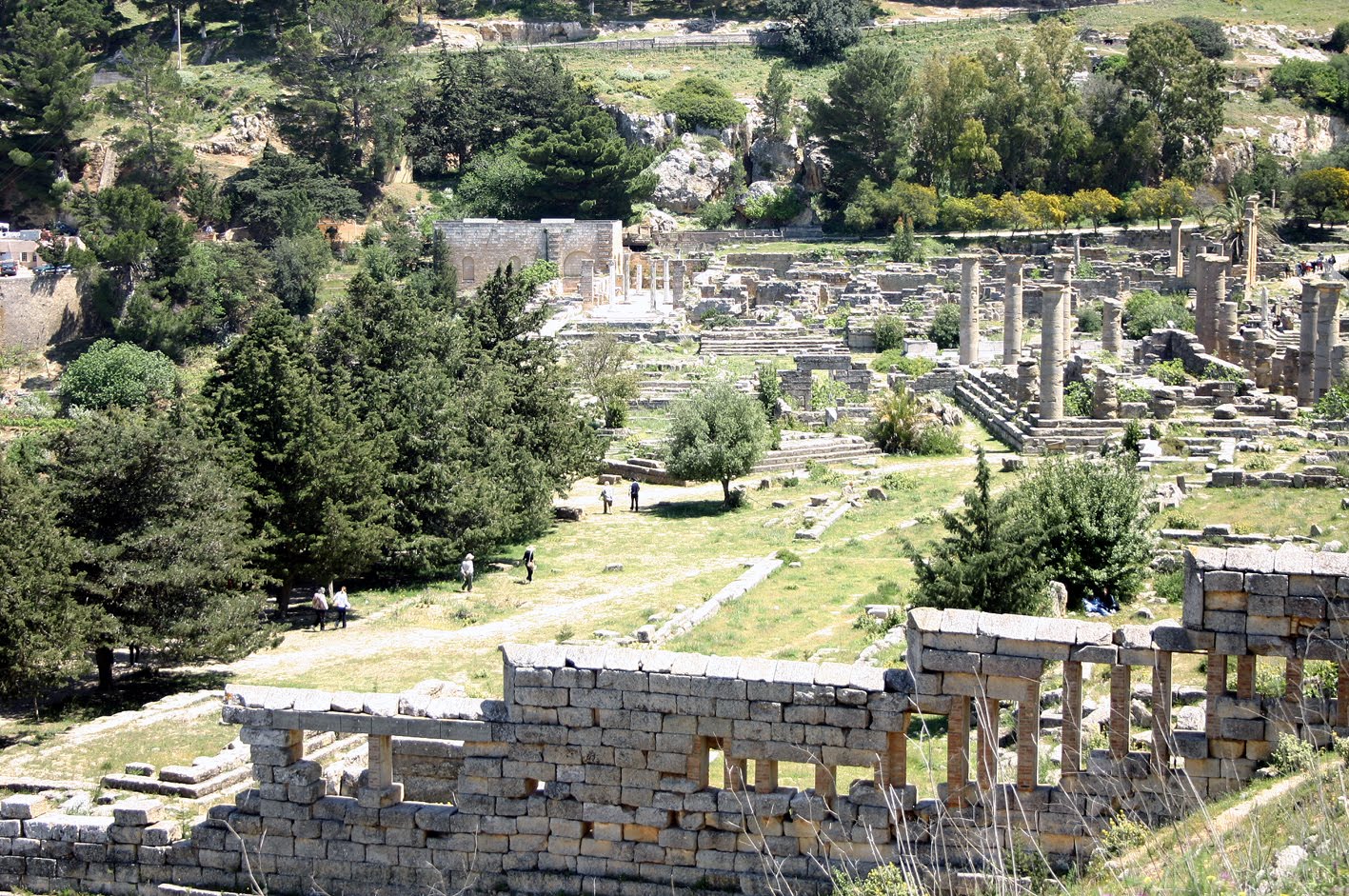
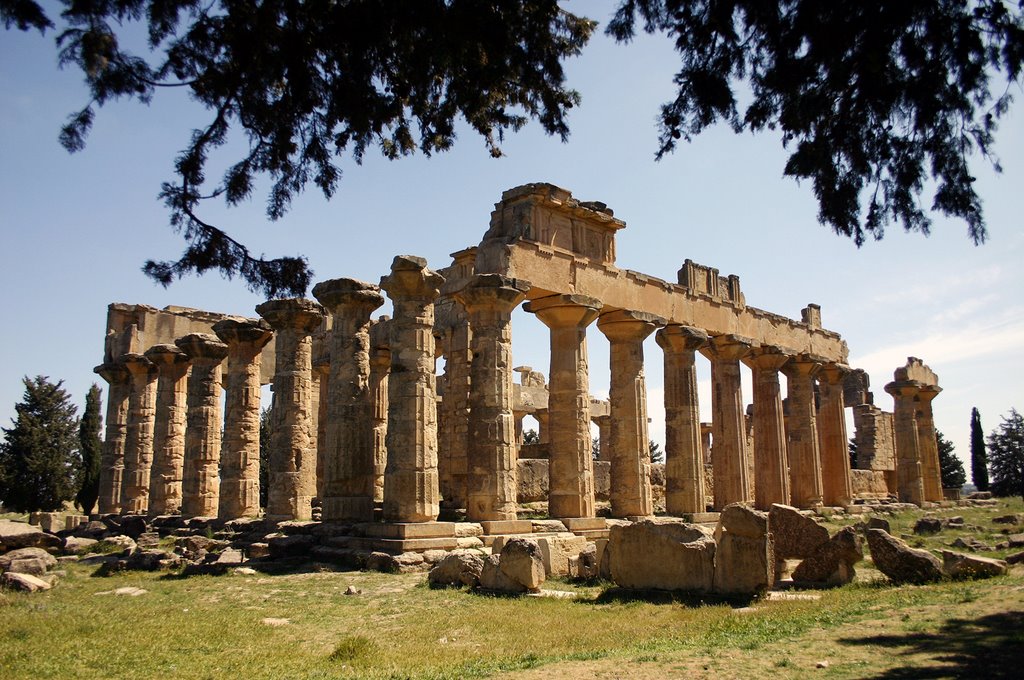
Day 6 Apollonia -Ras Al-Hilal -Al-Atrun-Al-Bayda
Highlights: Byzantine churches and the seashore Amphitheatre of Apollonia.
The morning is devoted to ancient Apollonia, which remained the port of Cyrene for a thousand years. Here you will see the several Byzantine churches, the Roman baths, the Palace and arguably the most enchanting Greek theatre in the world, set in a picturesque cove. Afterwards, drive along the coastal road of the Green Mountains to enjoy the vista and a picnic lunch (dependent on weather) before visiting the Byzantine churches at Ras al-Hilal and Al-Atrun.
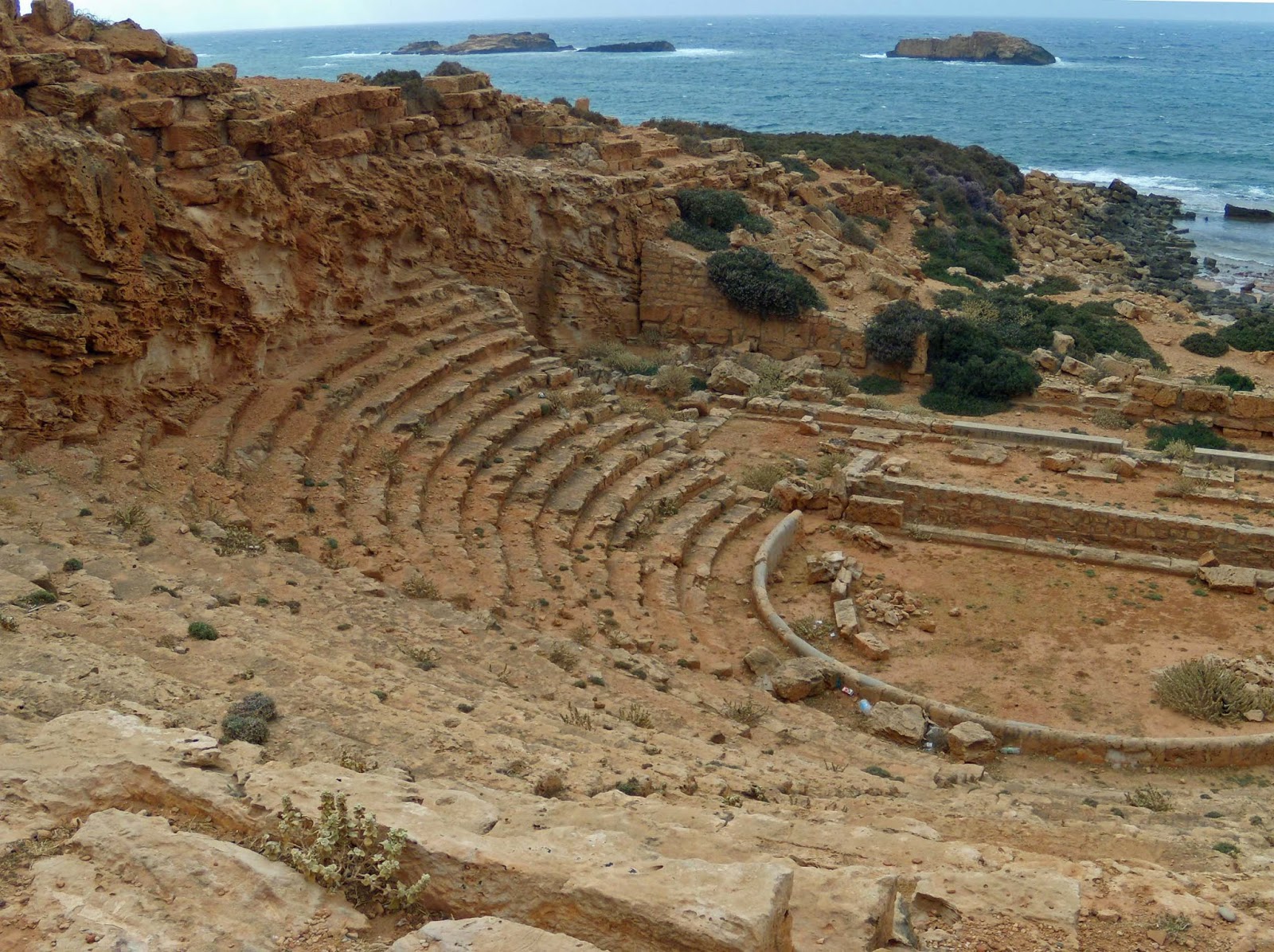
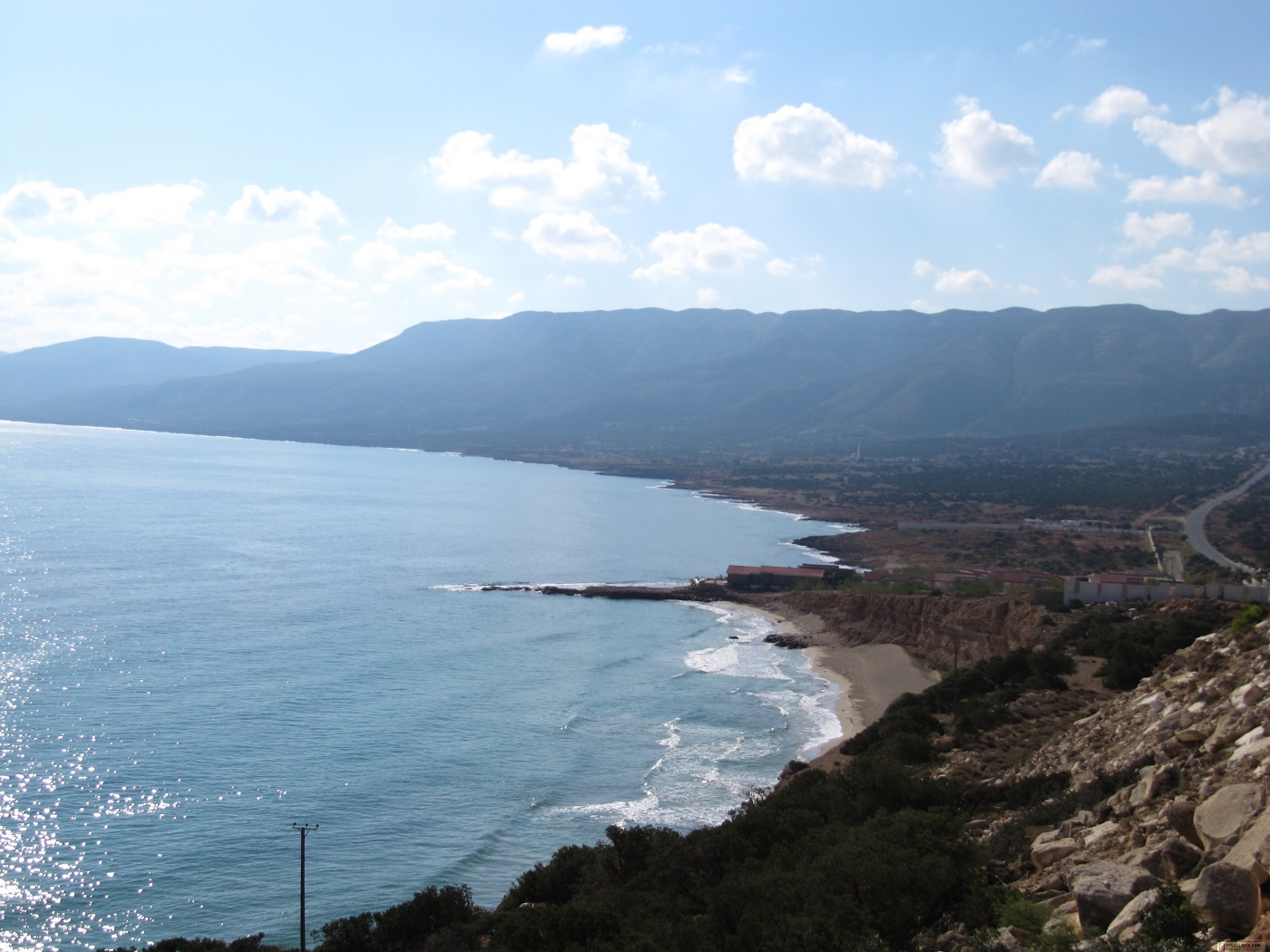
Day 7 Slontah -Qasr Libya -Benghazi -Tripoli
Highlights: Byzantine mosaics of Qasr Libya.
From Cyrene, travel back through the Green Mountains to Slontah, site of a tiny, eerie pre-Islamic grotto with grotesque carvings; its use is in doubt but it may have been a funerary site. Continue to Qasr Libya with its Byzantine church and museum housing one of the finest collections of mosaics in the country: 50 panels depicting river gods, nymphs and wildlife as well as a very rare depiction of the Pharos Lighthouse, one of the Seven Wonders of the World. Continue to Benghazi for the flight back to Tripoli.
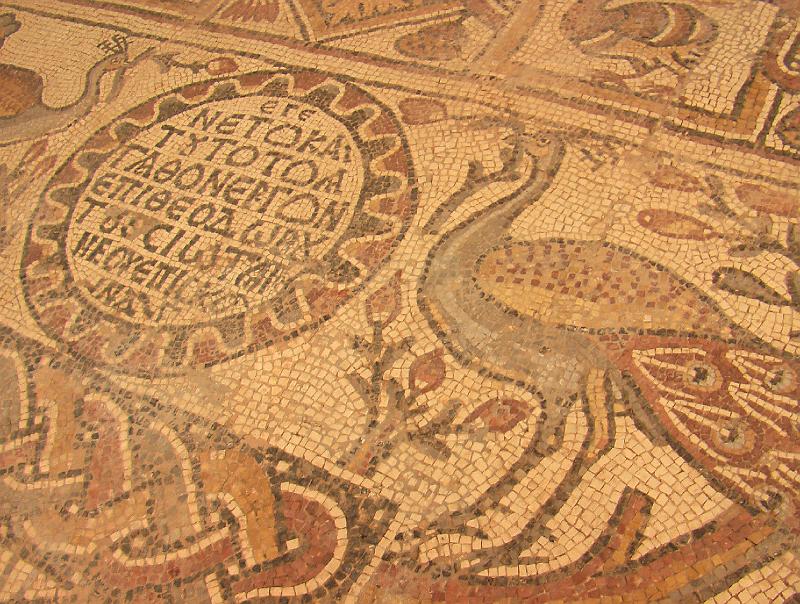
Day 8 Qasr Al-Haj -Nalut -Ghadames
Highlights: Qasr al-Haj andNalut qasr.
Today, we drive into the Berber heartland of the Jabal Nafusa. First stop will be at Qasr al-Haj to visit the most beautiful Berber granary qasr (castle) in Libya, and it’s no wonder that Dan Cruickshank chose this imposing 13th century fortress, circular in build, as one of ”The World’s 80 Greatest Treasures” in his acclaimed BBC TV series.
Continue to Nalut to visit another Berber qasr situated on the edge of an escarpment. This impressive granary castle, with its narrow, winding passageways, is of a different design to that of Qasr al-Haj. Continue to the UNESCO World Heritage Site of Ghadames, known as the ”Jewel of the Sahara” where we stay for two nights.
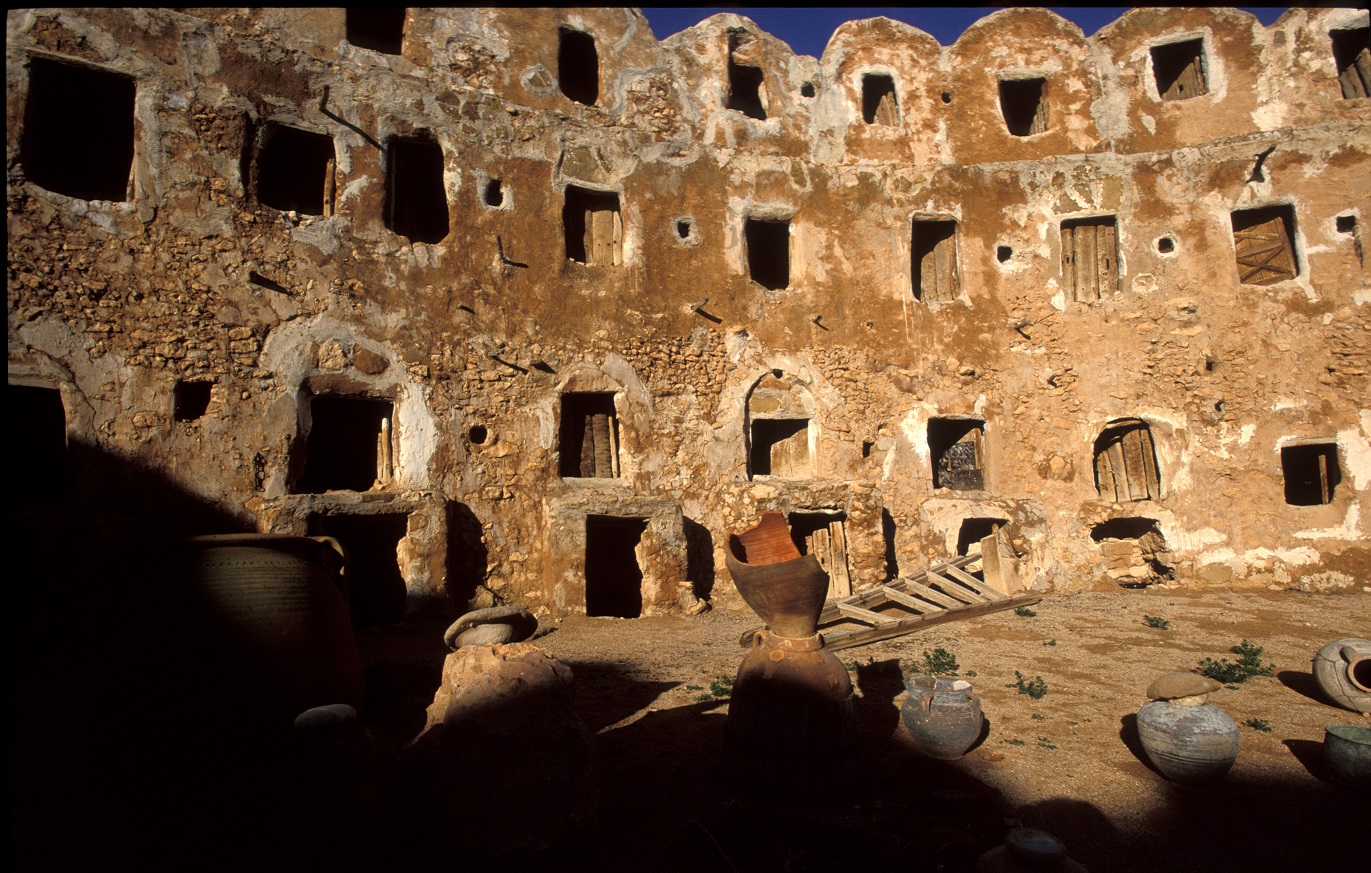
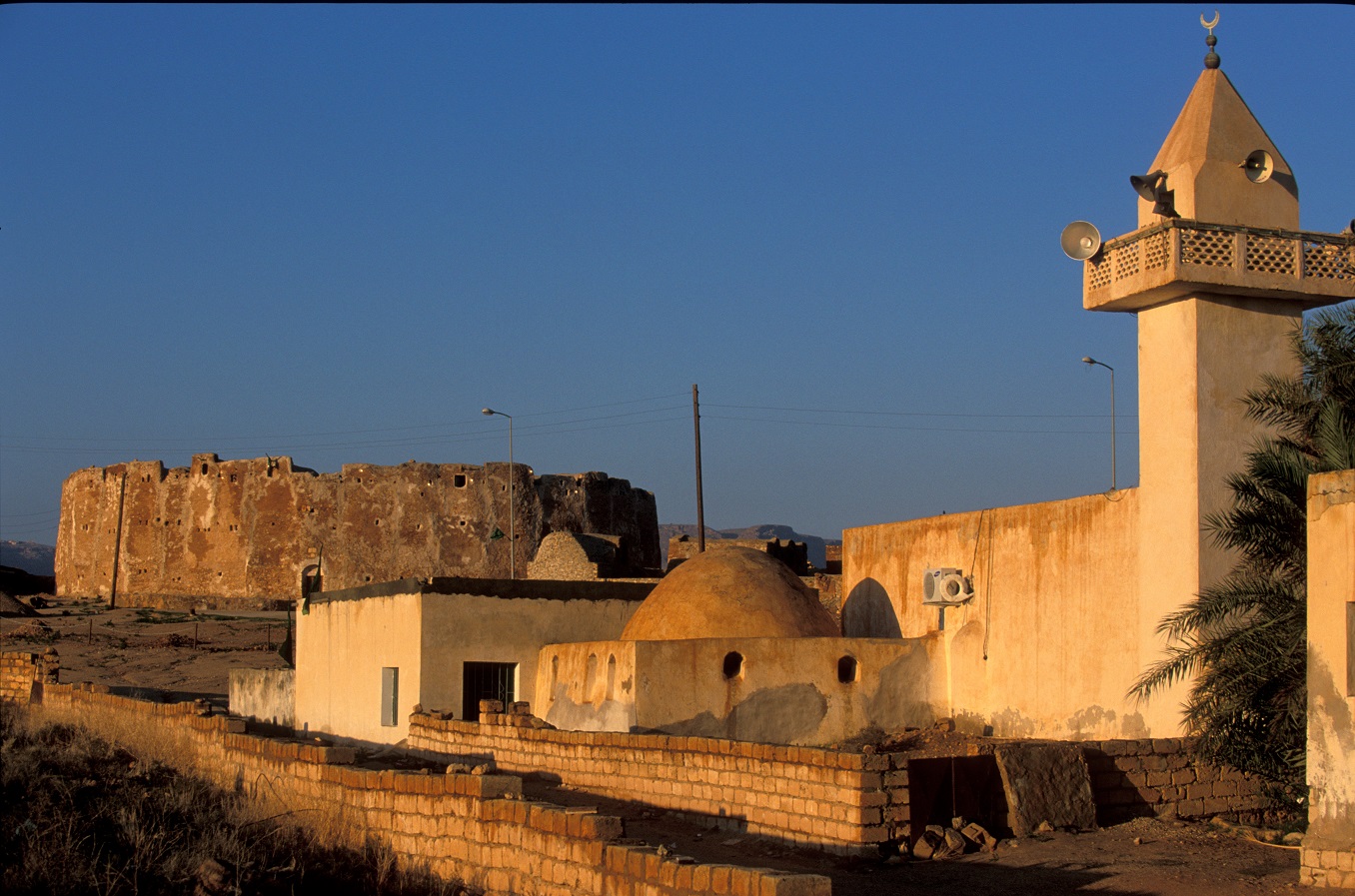
Day 9 Ghadames
Highlights: Old Town, Lunch in Traditional House and Sand Dunes of the Grand Erg Entering via the ancient gateway of Bab al-Burr.
Today we will explore the labyrinthine streets and enclosed passages of Ghadames’ Old Town, once inhabited by the tribes of the Bani Wazid and the Bani Walid. Renowned for its distinctive architecture, we will visit the various small squares, the old mosque and a madrasa (Koranic school), see the fruit and vegetable gardens and view the ancient system of irrigation. Lunch will be taken in a richly decorated traditional house in the age-old manner, sitting on the floor eating from commmunal dishes.
We will climb on to the roof of the house to see where the women, forbidden to wander the streets alone, would use the rooftops as a pedestrian thoroughfare. A visit will also be made to Ghadames museum with its historical and ethnographic displays. Later in the afternoon, climb aboard four-wheel drive vehicles to visit Ras al-Ghoul (Summit of the Ghost), the remains of an ancient Roman fort. Continue to the sand dunes of the Grand Erg Oriental, bordering the countries of Libya, Algeria and Tunisia, to meet the Tuareg and enjoy tea and fire-baked bread while watching the sunset.
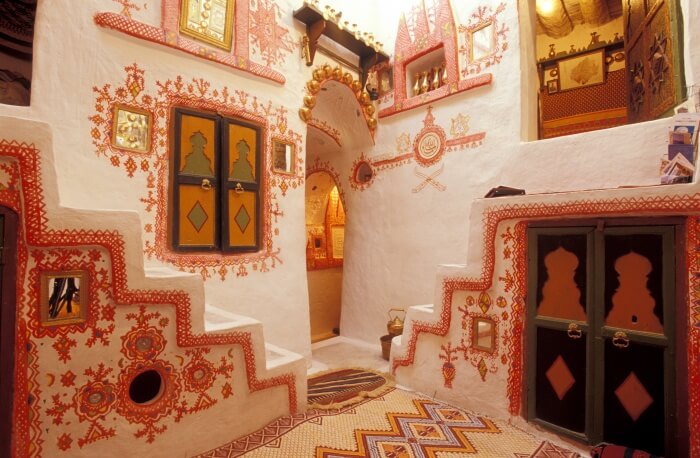
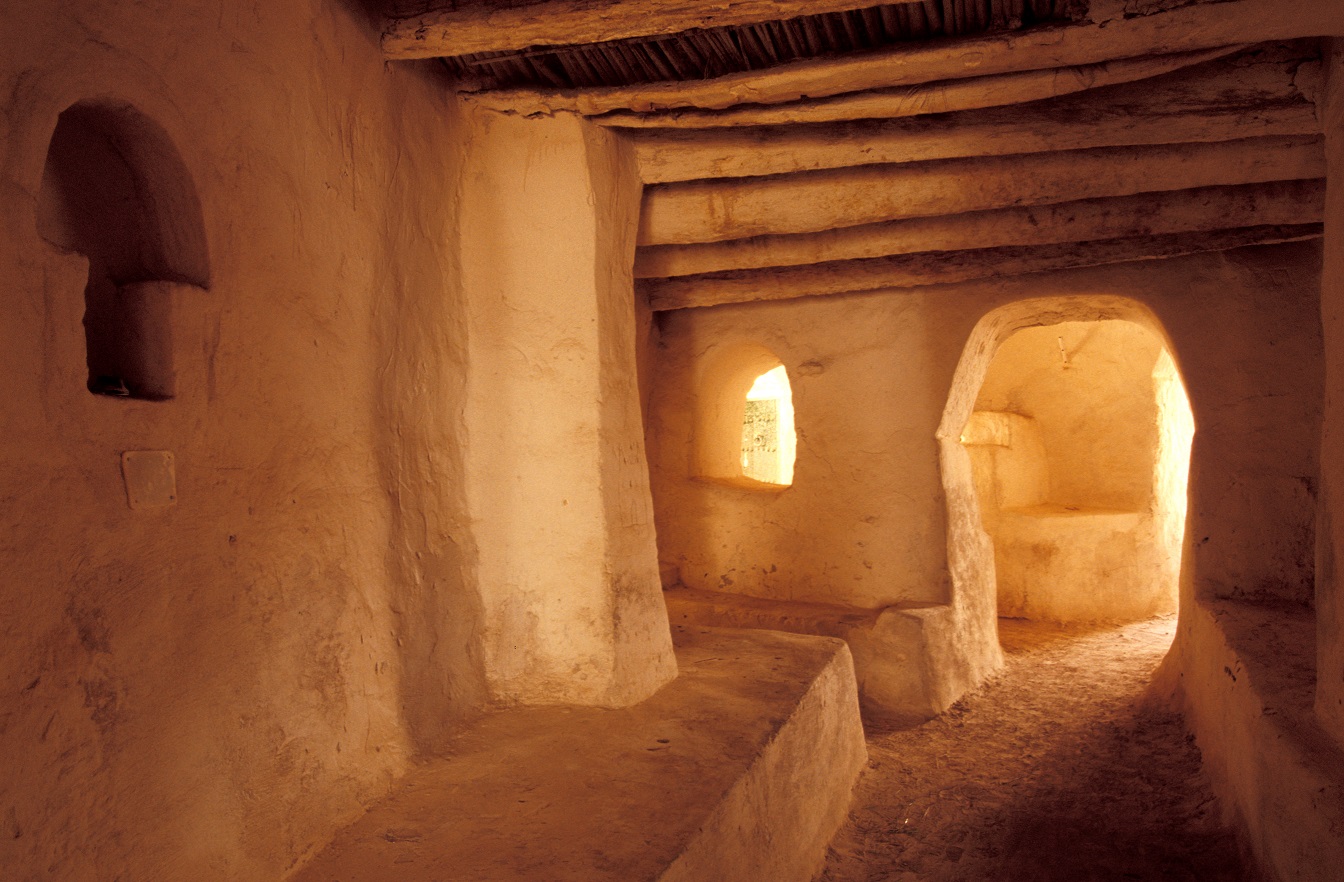
Day 10 Kabow – Tormisa – Gharyan
Leaving Ghadames, head back into the Jabel Nafusa to visit another ancient qasr at Kabow before driving to the abandoned village of Tormisa with its stunning clifftop views. Continue to Gharyan where you will stay overnight in a Berber troglodyte house.
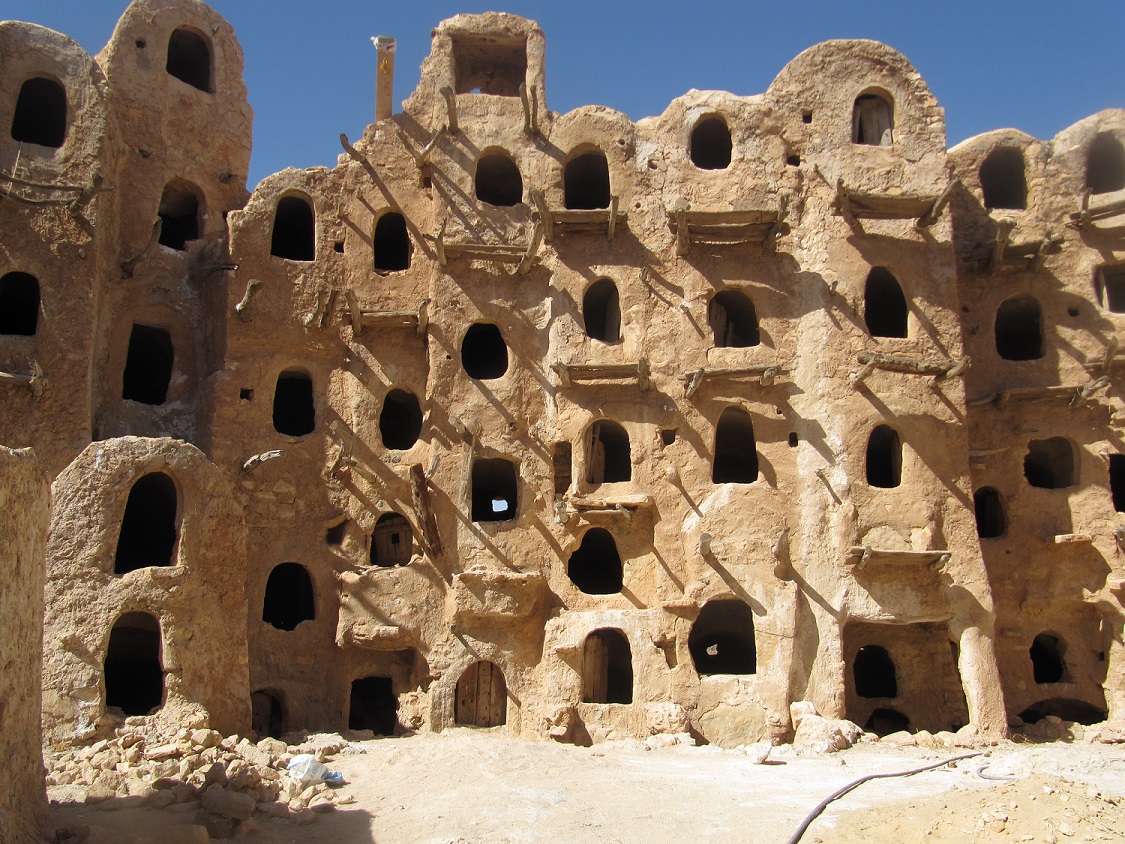
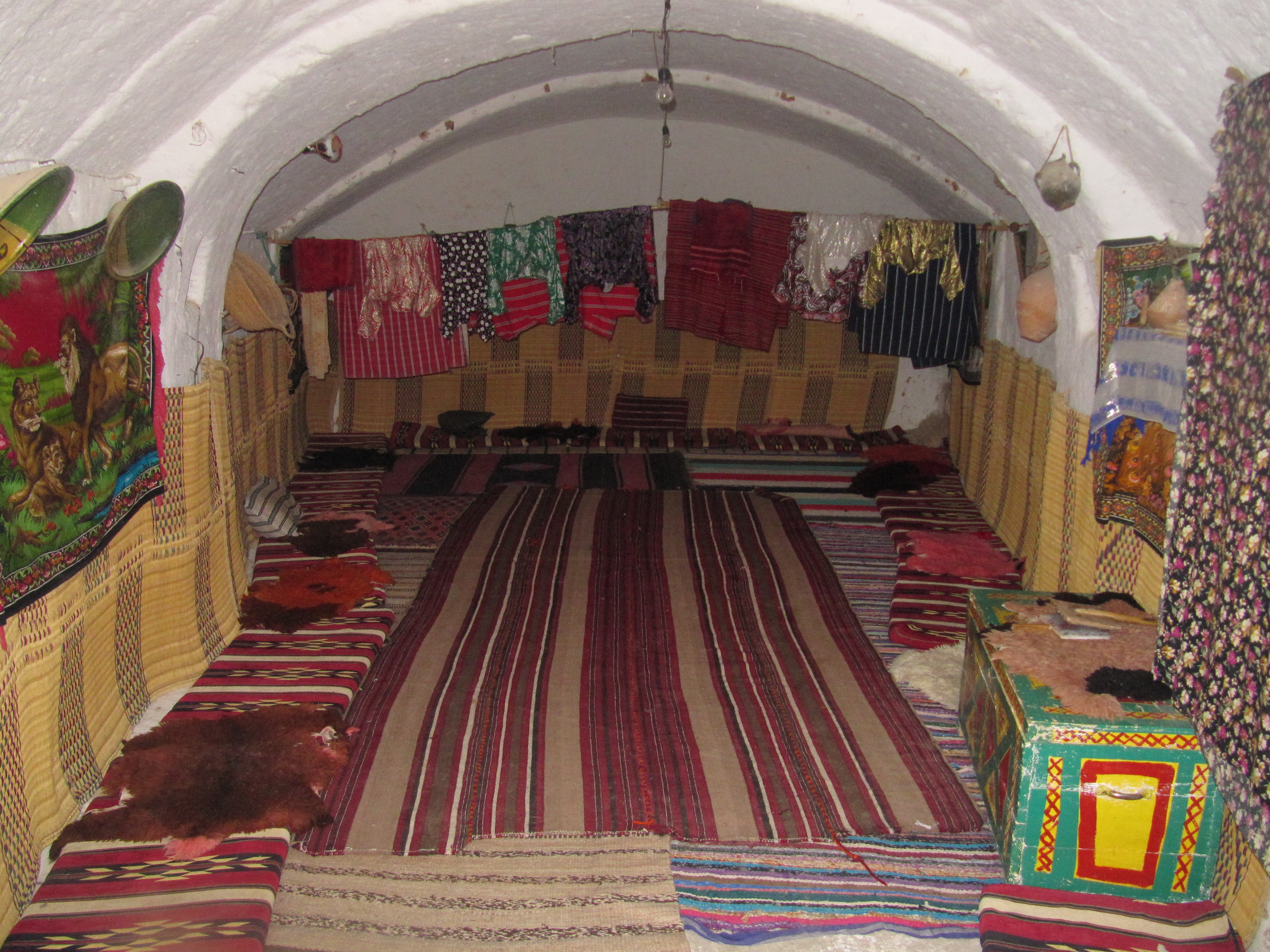
Day 11 Leptis magna – Villa sileen – Tripoli
Highlights: Leptis Magna Theatre, Amphitheatre, Baths, Imperial Forum, Market and Villa Sileen.
Full day excursion to the UNESCO World Heritage Site of Leptis Magna, the largest and best-preserved Roman city in the world that came to prominence in the 2nd century AD under its native son, the Emperor Septimus Severus. Following his reign, the city fell into decline until revived by the Emperor Justinian in the 5th century AD at which time it fell under Byzantine rule. The vast site is truly spectacular: the sites include the triumphal Arch of Septimus Severus, the Hadrianic Baths complex, the Palaestra (Athletics Ground), the Nymphaeum (Temple of Nymphs), the huge Imperial Forum, the Basilica, the Arches of Tiberius and Trajan, the Theatre with its beautiful backdrop against the Mediterranean Sea, the Sanctuary of the Divine Emperors, and the Market with its unique kiosks which, at the time of construction, were a groundbreaking design in the Roman world.
In the eastern section of Leptis Magna we will see the Circus and enormous Amphitheatre with seating for over 15,000 spectators. We will visit the vast arena, and see the gladiators’ anterooms and animal enclosures. En route back to Tripoli, if open a visit will be made to the 2nd century Villa Sileen, the home of a wealthy Byzantine that was discovered in 1974. The wall paintings portray scenes such as gladiatorial combat and chariot racing while the mosaics display river scenes that include sea nymphs, birds and animals.
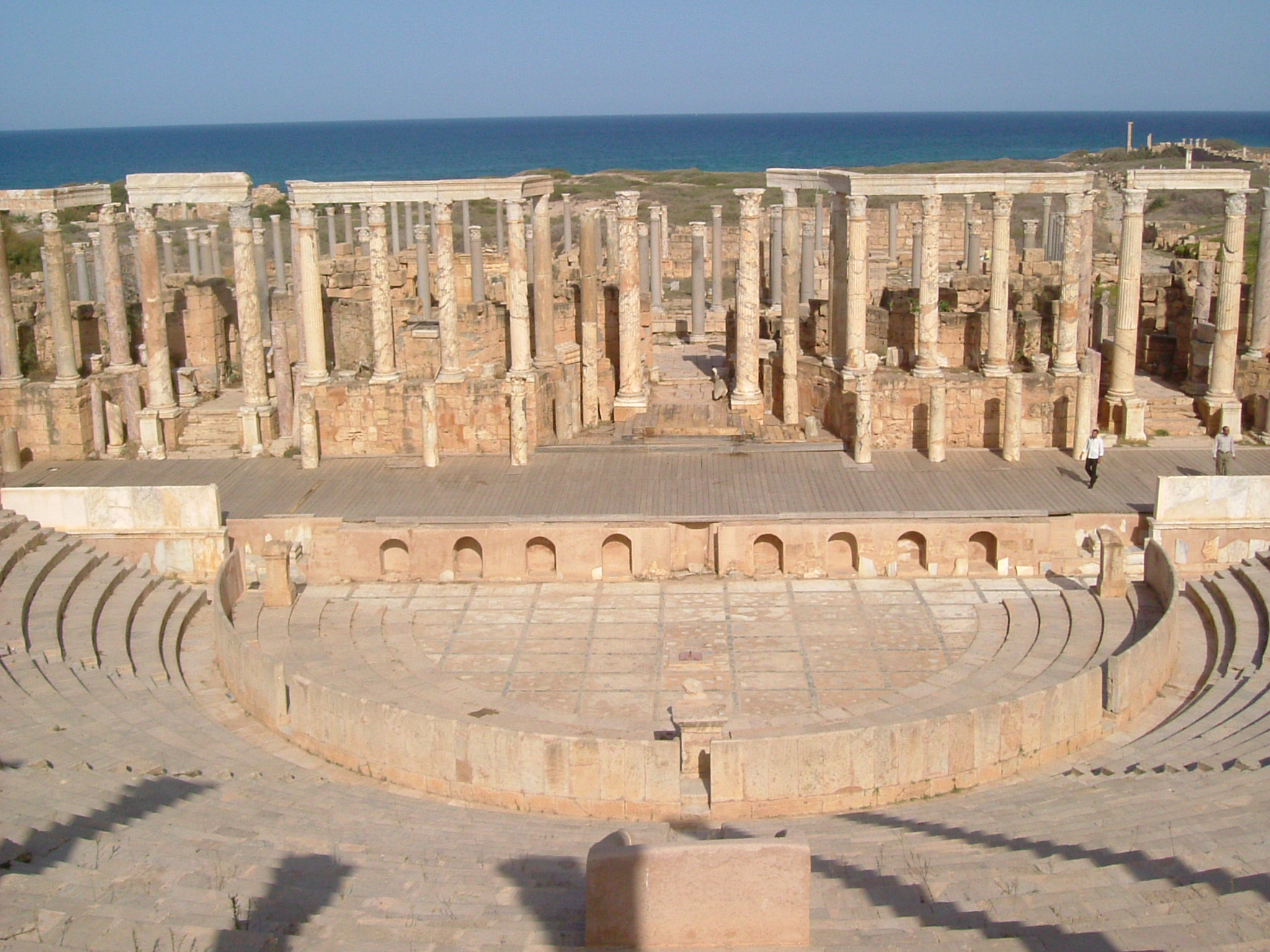
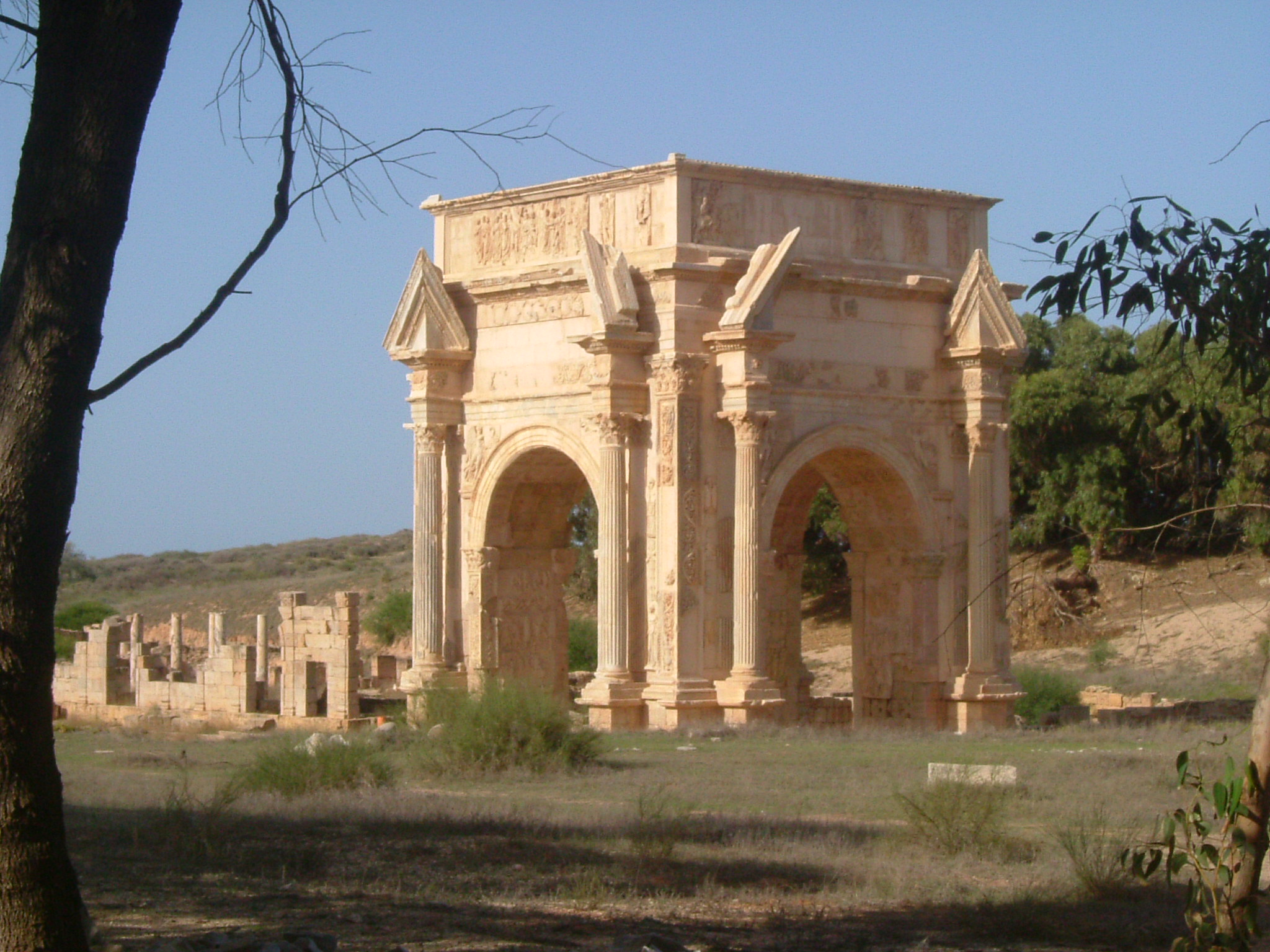
Day 12 Tripoli
Last day for shopping and at leisure until transfer to the airport.
-
DepartureTripoli International Airport
-
IncludedAccommodation in 3 starTransportTransfersPrivate Guide ENG speakingEntree fees at Tourist Attractions
-
Not IncludedFoodDrinksInsurance